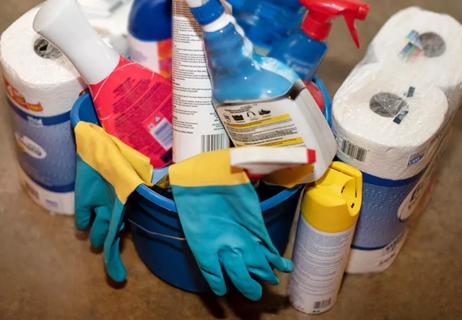
Research doesn’t support many health claims linked to detoxification programs
Trying to self-treat a suspected parasite with a so-called cleanse can do more harm than good
These herbal pellets aren’t backed by science and can be harmful
Partial healing begins a few weeks after you quit drinking

When the trees start to bloom, your allergies can come to life — medications, closing the windows and keeping clean can help

Yes, ear pain can result from seasonal allergies, causing even more issues

Avoid allergens when you can, and clear up phlegm with home remedies and medications

Chemicals in household cleaners can be dangerous and deserve your attention

This puffy shower accessory can become lodged with skin cells (and other gross things), so make sure you dry it daily and clean it once a week

Mold and bacteria in your reusable water bottle can cause health issues like infections, respiratory issues and allergic reactions

From protein consumption to progressive strength training and recovery time, you can build more muscle mass in four to 12 weeks

This five-day exercise plan for beginners includes three days of resistance training, two days of cardio and two days of rest

Create a consistent wake-up schedule, don’t nap too long and follow the ‘20-minute toss-and-turn rule’ when you can’t sleep

You’ll know spring has sprung with this light, veggie recipe

As an appetizer or the main course, this pizza will please

This eating style includes consuming foods high in fiber and water but low in calories, and has many health benefits

Kissing bugs are insects that can carry a dangerous parasite that causes Chagas disease

Yes, but male UTIs are often the result of another issue like diabetes, prostate issues or kidney stones

Building your endurance and confidence, plus giving yourself plenty of time, are key

Whether you’re cycling consistently or occasionally, it’s important to have safety essentials like a helmet, shirts with sleeves, eye protection and more

Start with a few minutes a day and work your way up to an hour or more to help your baby hit developmental milestones

When outside, protect your skin from damaging UV rays with a fresh layer of sunscreen at least once every two hours

Encourage your child to ignore the bully, seek help from an authority figure and stay with a trusted group of friends